- Details
- Hits: 1138
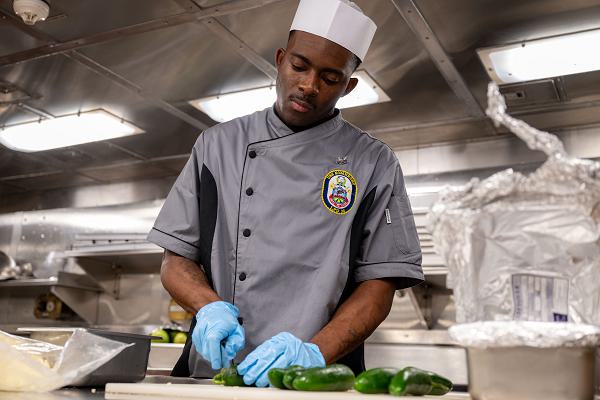
Pacific Ocean. (February 23, 2024): It is said that militaries “travel on their stomachs” and this is especially true for American Sailors at sea. What is also true is the enormous impact chow has on troop morale. In this photo by Petty Officer 2nd Class Evan Diaz, Culinary Specialist 2nd Class Nathan Bradley cuts jalapenos in the galley aboard the San Antonio-class amphibious transport dock ship USS Somerset.
Navy Culinary Specialists are responsible for preparing menus, operating shipboard dining facilities, and ordering supplies. Most importantly, they are the unofficial hosts for Sailors who congregate at dining facility to play games and enjoy social interaction. Exhaustive studies by the armed forces have concluded that the quality of chow is among the most important factors in boosting morale of the crew. That is why the Navy takes extra steps to provide quality and variety for its forces serving aboard warships around the world.
To become a Navy Culinary Specialist, candidates must pass Basic Training and a five-week technical school at Fort Lee, Virginia. Here Sailors learn how to operate a Navy mess afloat, estimate quantities and types of foods needed, and the cooking skills to provide high quality meals on a massive scale.
Upon graduation, these Culinary Specialists are a vital asset to a Navy that “sails on its stomach.”
- Details
- Hits: 952
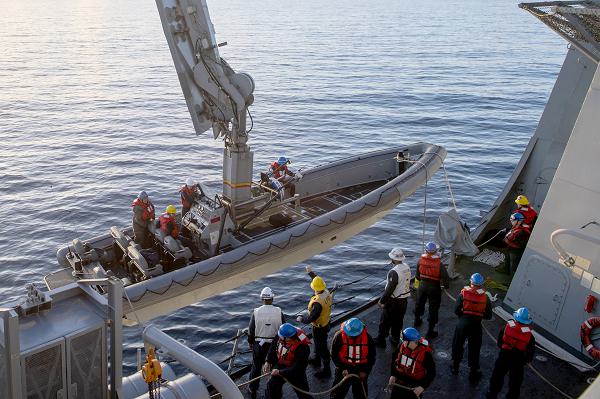
Pacific Ocean. (February 27, 2024): In this photo by MC2 Connor Burns, Sailors assigned to the San Antonio-class amphibious transport dock ship USS San Diego lower a rigid hull inflatable boat over the side. The San Diego is participating in NASA’s Underway Recovery Test 11 in preparation for the Artemis II crewed mission. Heralded as the first step to Mars, Artemis II will send four astronauts to orbit the moon aboard the first crewed Orion spacecraft. NASA and the Department of Defense will conduct a series of tests to prepare for eventually establishing a permanent base on the moon, and crewed mission to Mars.
A vital part of this historic effort falls to the U.S. Navy.
Amphibious transport docks, like USS San Diego, have unique capabilities that make them an ideal partner for NASA by providing helicopters, launching, and recovering small boats, and providing advanced medical facilities.
- Details
- Hits: 2995
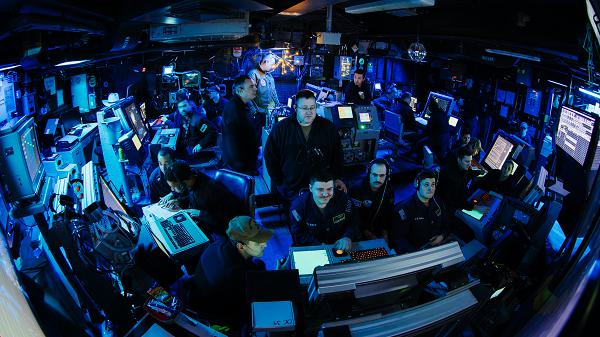
Atlantic Ocean. (February 21, 2024): This photo by MC3 August Clawson expertly captures the eerie scene inside the Combat Information Center, or CIC, aboard the Nimitz-class aircraft carrier USS George Washington. Launching fifth generation fighters and support aircraft while at sea is a tricky and dangerous business. Sailors must maintain air traffic control while constantly scanning the skies for incoming enemy aircraft, missiles, or drones.
To accomplish this, aircraft carriers operate in flying “cycles” or packages of planes dispatched for missions at various times each day. Cyclic operations refers to the launch and recovery cycle for these various groups of aircraft aboard aircraft carriers. The shorter the cycle, the fewer aircraft can be launched and recovered. A longer cycle can include up to twenty aircraft. Flight operations go on twenty-four hours a day and in all-weather as planes are fueled, serviced, and sent back into the air.
Organized into “events,” planes are prepared for launch, spotted on the flight deck, and launched in as little as fifteen minutes. The departing cycle leaves room on the deck to recover the past cycle and the rotation continues around the clock.
Making this happen is the highly skilled Sailors aboard the Washington who keep these cycles going safely, and on time.
- Details
- Hits: 960
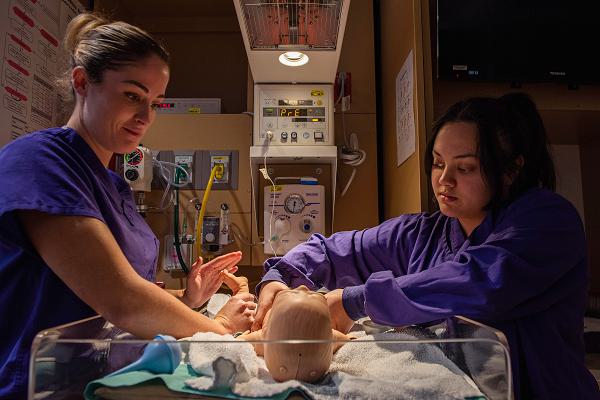
Travis Air Force Base, California. (February 26, 2024): “Military Brat” is an affectionate term given to the children of active duty servicemembers. They enter this world with a green “US” stamped on their diapers and in the loving arms of a military nurse. In this photo by Kenneth Abbate, Air Force First Lieutenant Elisabeth Wallace, left, and Senior Airman Shorettalayne Gutierrez provide stimulation to a newborn mannequin in the labor and delivery simulation room during weekly staff training.
Each year, thousands of children are born to military families at bases at home and abroad and the duty of bringing these future troops into the world falls to military nurses. These highly skilled professionals give prenatal and postpartum care to military wives and are trained to handle the high-pressure situations during childbirths. They are part of a team of caregivers who provide delicate care for newborns until they are discharged.
To become an Air Force nurse requires at least a bachelor’s degree or higher in nursing from an accredited school and at least one year of full-time practical experience. Candidates must pass the 6-week Air Force Officer Training School and be under age 47 before being commissioned as officers. Nurses can specialize in various Ob/Gyn fields and there are numerous opportunities for them to gain new knowledge and skills.
Perhaps the greatest benefit these nurses enjoy is bringing new lives into the world while serving their country.
- Details
- Hits: 1171
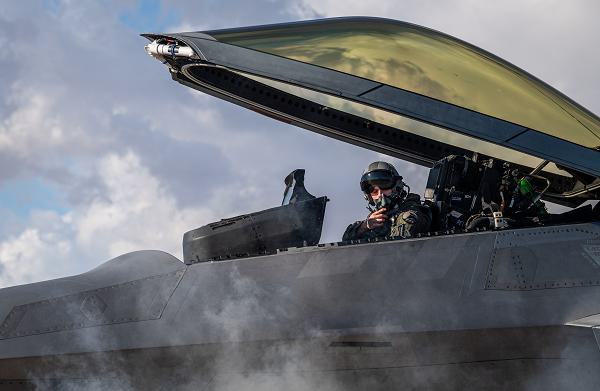
Nellis Air Force Base, Nevada. (March 1, 2024): In this photo by Technical Sergeant Curt Beach, First Lieutenant Jake Heydinger, a pilot with the 525th Expeditionary Fighter Squadron, prepares for flight during exercise Bamboo Eagle 24-1. The exercise involved approximately 3,000 service members across the four military branches flying and maintaining more than 150 aircraft from twenty-four units from across the nation. Conducted by the Air Force Warfare Center, Bamboo uses the lands and airspace of the Nevada Test and Training Range, the largest facility in the country which occupies about three million acres.
Here the Center offers advanced pilot training, develops new tactics, and integrates many of the Air Force's test and evaluation requirements. Founded in 1966, the Center teaches the concept of Agile Combat Employment (ACE), a warfighting strategy developed to compete in today’s three-dimensional combat environment. ACE relies less on traditional large overseas bases that serve as hubs for combat deployments in favor of smaller, more dispersed forward operating bases.
The shift in policy is due to the advances in reconnaissance and missile technologies that now present risks to bases that were traditionally considered “sanctuaries.” This year, the event included maritime warfare including anti-ship technology and cyber operations.
The 525th Fighter Squadron, based at Joint Base Elmendorf–Richardson, Alaska, flies the Lockheed Martin F-22A Raptor to conduct precision strikes of surface targets using a wide variety of conventional air-to-surface munitions.
- Details
- Hits: 11242
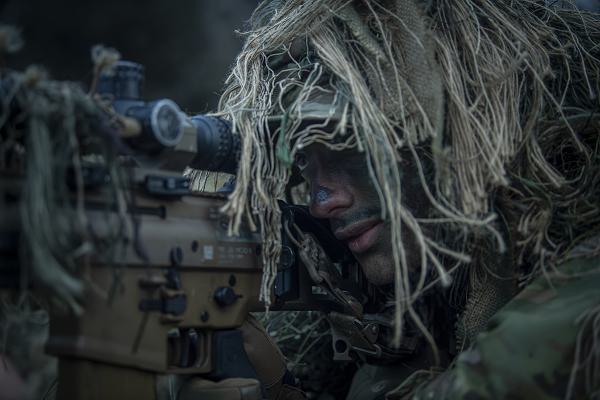
Santa Maria Regional Airport, California. (February 28, 2024): In the movies snipers always belong to the Army or Marine Corps, sharp shooters from the Air Force get very little attention. In this photo by Staff Sergeant Scott Warner, 14th Air Support Operations Squadron tactical air control craftsman Staff Sergeant Aaron Weaver aims his SCAR MK 20 sniper rifle at the enemy while playing the opposing force during exercise Agile Flag 24-1.
Sergeant Weaver is a member of the Air Force’s “Close Precision Engagement Teams” charged with protecting flight lines and other vital areas of bases around the world. They also conduct perimeter defense, counter sniper operations, reconnaissance, and surveillance. Each team is composed of two individuals, the sniper and the spotter. The spotter uses a long-range scope to identify targets, gather range and windage adjustments, and relays this information to the sniper. The sniper makes the adjustments on the M-24 and fires on the target.
Snipers must be able to operate independently and make quick decisions in high pressure situations. They also play a vital role collecting intelligence on enemy activity which gives commanders situational awareness. These missions require patience, attention to detail, and the ability to remain calm in often chaotic situations. As one can imagine, becoming an Air Force sniper requires extensive training and a high level of mental and physical discipline.
To become an Air Force sniper, candidates attend an eleven-day Advanced Designated Marksman Course that familiarizes students with the M24 weapon system. Next, students attend a nineteen-day Close Precision Engagement Course at Fort Bliss, Texas. The course teaches advanced marksmanship, military scouting skills, and field tactics. The course is very physically demanding with PT drills every day, obstacle courses, and forced marches. Instructors watch to see how their students perform when exhausted and under severe stress.


